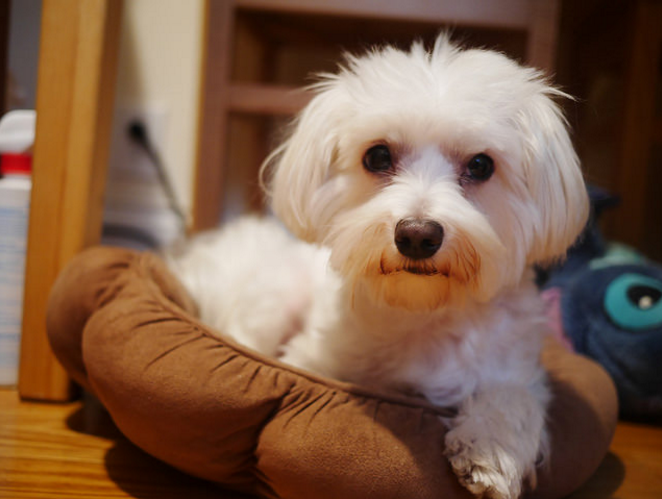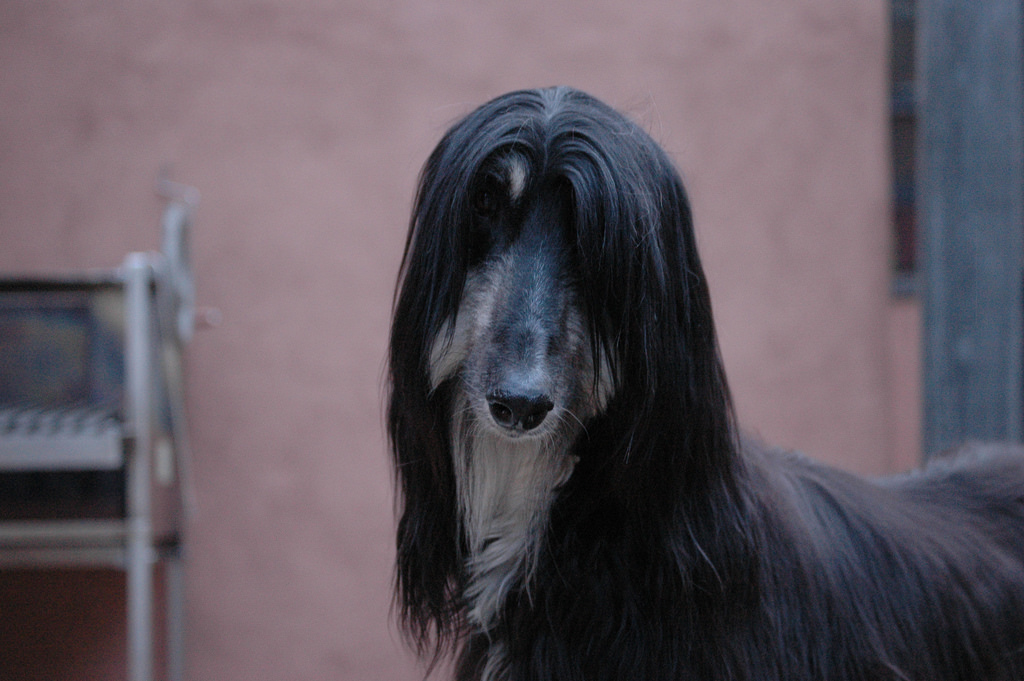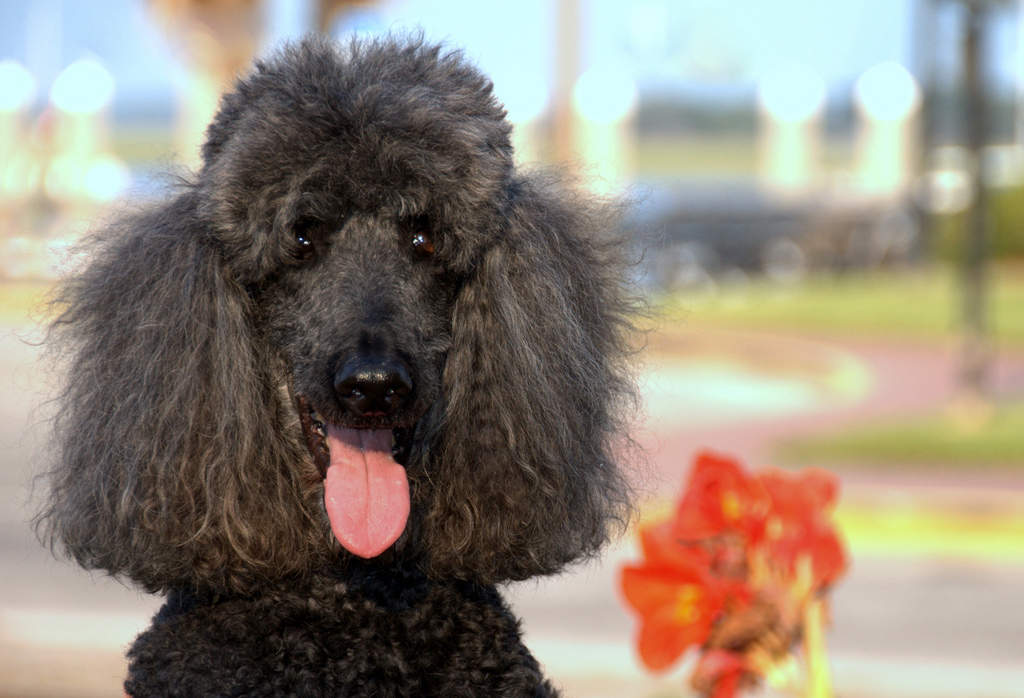Here's what you need to know about hypoallergenic dogs

I’ve had a dog for most of my life, but until I adopted my first dog on my own a few years ago I had never had to think about what type of dog to get.
We had Scruffy, a dog so thoroughly mutt I couldn’t begin to guess what breeds he was a mix of. Then, because I was terrified of dogs as a kid, we stuck to small breeds: There was Pepper, a shih tzu, and Jake, a Yorkie.
One day, my mom got home from the doctor’s office and told us the bad news: We had to give up Jake. His hair was a nightmare for my mom’s immune system. It wasn’t her fault, but it was difficult to accept.
Fortunately, my best friend’s family was able to take him in and I got to visit as often as possible. But when it came time to adopt a dog of my own, I had that on my mind: I wanted to get a hypoallergenic dog so I wouldn’t have to worry about how their shedding might impact my family’s or roommates’ health.
Little did I know, I’d end up looking into the eyes of an adorable chihuahua-something pup and taking him home that very day. I’d found my soulmate, and he shed everywhere.
Luckily for me, I’m not as sensitive to dog hair as others in my family. I have the occasional bouts of uncontrollable sneezing after a nice, long cuddle – especially if Buster has spent some time rolling around outside – but for the most part I don’t notice my sensitivities as long as I keep him clean.
If you’re just setting out to find a new family member of your own and want to make sure your own family isn’t driven wild by pet dander, look for a hypoallergenic dog, which won’t shed as much as other dogs.
Keep reading to find out what you need to know about what hypoallergenic actually means and which dog breeds will minimize your allergies.
If you’re short on time: No dog is 100-percent hypoallergenic, but there are some breeds you can find that have non-shedding coats that are better for allergy sufferers. When you do get a dog, bathe them weekly, use an air purifier, set an allergen-free zone (like your bedroom) and keep your home free of clutter.
What are hypoallergenic dogs?
Hypoallergenic dogs are simply dogs that have predictable, non-shedding coats. The more your dog sheds, the more pet dander you’ll be exposed to. Pet dander is attached to pet hair and is likely the culprit if you’re allergic to dogs.
It’s estimated that up to 10 percent of Americans are allergic to dogs, so you’re not alone if you find yourself sneezing every time you walk into a home with a dog.
Even if you aren’t fully allergic, you may find there are certain times your allergies act up around dogs. With me, for instance, I didn’t notice problems around dogs at all while growing up and only noticed issues around Buster during certain times of year.
Sometimes that’s manageable, and sometimes you’ll want to go the safe route and adopt a hypoallergenic breed. Following are some common hypoallergenic breeds to consider as you look for your next furry friend.
Hypoallergenic dog breeds
It’s important to remember that no dog is 100-percent hypoallergenic. If you have a severe allergy, even a small amount of dander could trigger your allergies. But the following dogs are commonly accepted as good for allergy sufferers because of their non-shedding (hypoallergenic) coat.
Afghan Hound
Afghan Hounds are aloof, dignified dogs that need regular exercise and grooming. Make sure to bathe and brush them twice a week to keep their coat clean and healthy.
American Hairless Terrier
American Hairless Terriers are known for being lively, friendly and intelligent. They don’t need much exercise; regular walks and indoor playtime are fine for this breed. Make sure to bathe them regularly and pay special attention to their nails.
Bedlington Terrier
Bedlington Terriers are gentle, loving dogs that don’t need much exercise aside from regular walks and indoor playtime. Don’t get freaked out by their wooly coat – they’re just as hypoallergenic as any other breed on this list.
Bichon Frise
A Bichon Frise will be a gentle, happy, playful companion. Make sure to keep up on your grooming appointments if you adopt a Bichon: Their hair doesn’t shed but just keeps growing, so if you ignore it for too long you’ll start to see matting.

Afghan Hounds need regular exercise and grooming to be happy. Image: Bryan Ungard
Chinese Crested
A Chinese Crested – think “How to Lose a Guy in 10 Days” – loves being around other people. Be careful with these small dogs if you have rambunctious children.
Giant Schnauzer
Giant Schnauzers are smart dogs that will instinctively be protective of you and your family. They need a lot of exercise and will be happy with plenty of activities to keep them busy.
Irish Water Spaniel
Irish Water Spaniels are strong and intelligent, needing plenty of exercise to keep their energy under control. They have a water-repellant double coat, so make sure to brush them every couple of weeks.
Kerry Blue Terrier
True to their terrier name, Kerry Blue Terriers are energetic and fun-loving. They love daily exercise and will enjoy being around your family. Make sure to trim their coats regularly.
Maltese
A Maltese won’t know their own size: This dog is brave, playful and loves finding adventures. You’ll need to brush their long hair daily to prevent matting.
Miniature Schnauzer
Miniature Schnauzers are natural watch dogs. They’e also smart, cheerful and adapt fairly easily to different environments. You’ll need to trim their coat regularly.
Peruvian Inca Orchid (Hairless)
You can also get a coated version of the Peruvian Inca Orchid, but the hairless is your bet for an allergy-free existence. This breed needs a good amount of exercise, but is fairly low-maintenance when it comes to grooming.
Poodle
Poodles might be a surprise because of the appearance of their coats, but they’re a great option for people with allergies. They’re quite smart and need regular activity. The only downside of their coat is that they’ll need regular professional grooming – clippers at home aren’t going to cut it.
Portuguese Water Dog
Portuguese Water Dogs are intelligent, loyal, and, most of all, incredibly active. This is a dog that will be great for you if you’re an outdoorsy kind of person. Their coat is waterproof coat and will need regular grooming.
Spanish Water Dog
Spanish Water Dogs are great protectors and hard-working dogs with high energy levels. You don’t have to worry much about grooming with this breed beyond shaving their coat once a year.
Standard Schnauzer
Standard Schnauzers are a great option if you have kids. They’re friendly, energetic and will need daily exercise to keep them happy. Brush them regularly to prevent matting.
Xoloitzcuintli
You can get either a hairless or coated Xoloitzcuintli and you should be fine. The coated version of the breed has a short, flat coat. These are very chill dogs that can sometimes come off as aloof. Their coat is medium-maintenance as far as grooming goes.

There are plenty of dog breeds to choose from if you’re allergic to dogs. Image: Anita & Greg
Similarities between hypoallergenic dogs
Hypoallergenic dogs all have one thing in common: They don’t shed, or at least not much. That means the dander dogs normally carry around with them will have a more difficult time making it into every tiny crevice in your house and all over your clothing.
Other than that, there’s no real test for figuring out if a dog is hypoallergenic beyond asking or looking it up online, which is why Natural Dog Owner has made this guide. You know yourself better than anyone, but the last thing anyone wants is to fall in love with a pup only to realize when you get home that your eyes are swelling shut and you’re sneezing so often you can barely see.
Differences in care for hypoallergenic dogs
The main difference in care for hypoallergenic dogs doesn’t come from their being hypoallergenic specifically, Rather, it’s because of this difference that they’re more likely to be hypoallergenic.
Bernadine Cruz, a spokeswoman for the American Veterinary Medical Association, explained it this way: “Those dogs that are more universally less allergenic … don’t shed a lot or they go to the groomer frequently and by getting their hair washed and trimmed, get the allergens off their skin.”
So, there you have it: The differences in care come not because your dog is hypoallergenic, but because coats that require more care are more likely to make a dog hypoallergenic by getting cleaned often.
How to minimize your dog allergies
Once you get home with your new pup – or if you’re starting to feel allergies coming on with a long-time furry friend – take some precautions to help make your home as allergen-free as possible:
- Get an air purifier.
- Keep your house as clutter-free as possible.
- Bathe your pet regularly.
- Keep your pet out of the bedroom.
And remember, you’re not the only one with allergies! Your dog might be struggling with their own allergies and knows how you feel, so try to remember that it’s not your dog’s fault you can’t stop sneezing around them.
It’s important to remember that no dog is 100-percent hypoallergenic. While the term may have started off meaning a literal absence of allergens, it is now understood to mean those dogs that have non-shedding coats, which will expose you to fewer allergens.
If you are allergic to dogs, you can try to keep your home as allergen-free as possible, but ultimately whether you’ll be affected comes down to your own sensitivities to whichever dog you adopt. If possible, try spending a decent amount of time around the breed you’re thinking about adopting before you go through with it to make sure you can handle the amount of dander they’ll bring with them.
And remember: Don’t feel guilty if you can’t end up adopting the pup that caught your eye because you end up in a sneezing fit if you even look at them. A healthy human leads to a healthy, happy dog.
-Steph Grimes
Steph is a Las Vegas-based writer and dog lover who edits Natural Dog Owner. When she’s not traveling or holed up writing at a cafe, she can usually be found outside meeting new dogs.
Feature image: Samneang Lina Sin
